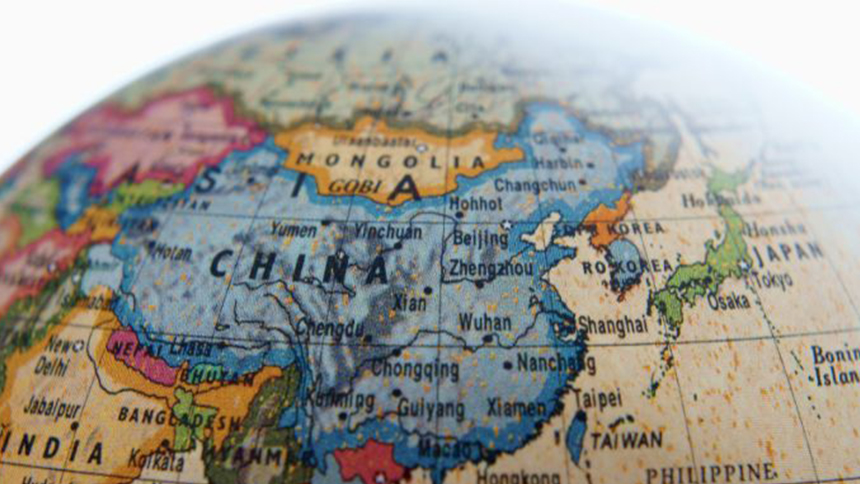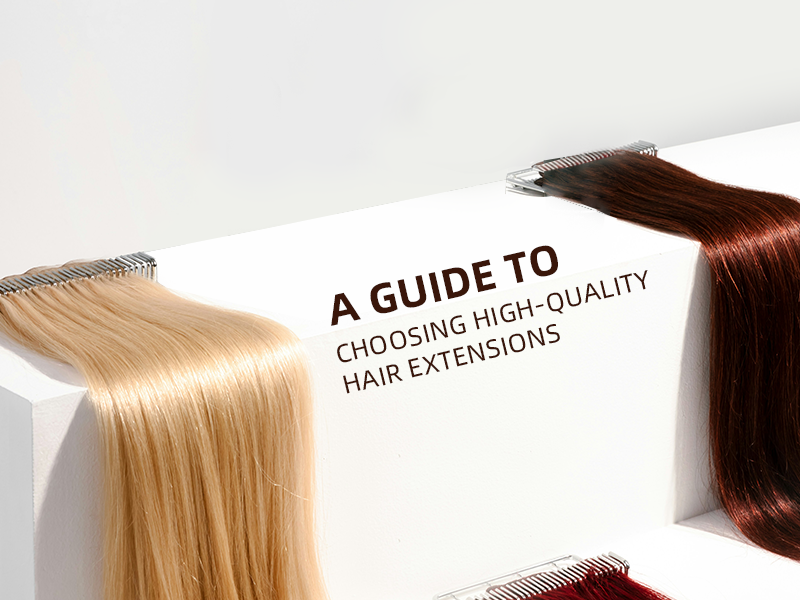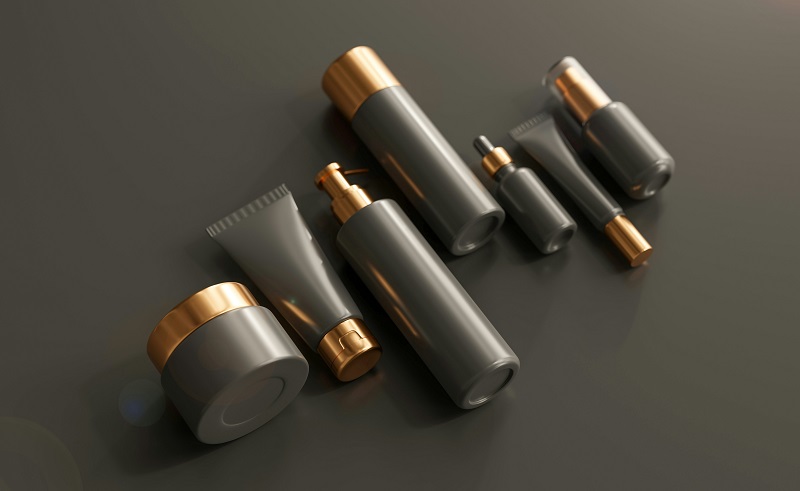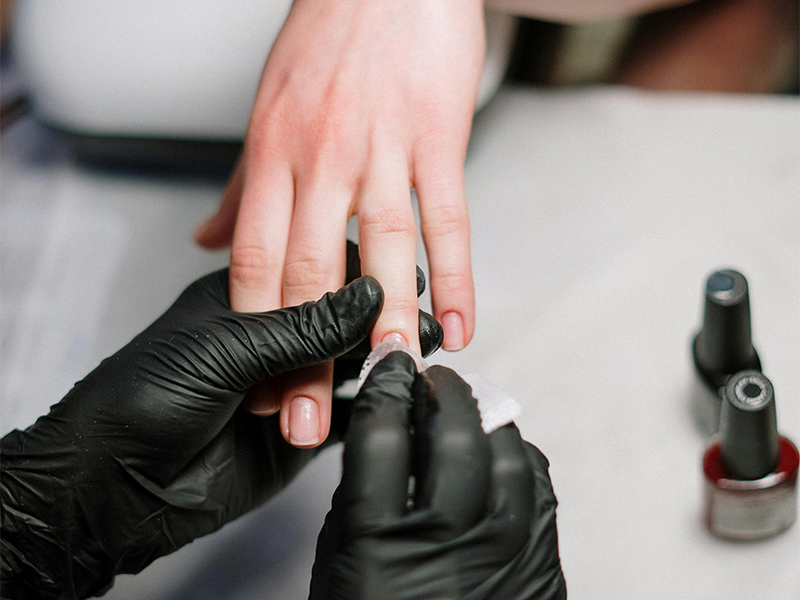In the 1980's Japanese beauty came ashore in the U.S. By the early 2010's, Korean beauty hit big, spawning a decade-long fascination with BB creams, sheet masks, and snail mucin. Asia has long been considered the seat of beauty innovation and inspiration, so as markets become increasingly globalized, where will the next big wave of imports come from? Some industry insiders believe that Chinese beauty brands (C-beauty) are primed to globally expand within the next five years. With the second-largest beauty market in the world – projected to reach $87.6 billion by 2025 – China’s digital acuity, speed-to-market capability, and forward-thinking marketing strategies may turbo-charge U.S. market penetration in the years to come.
C-BEAUTY IS IN A UNIQUE POSITION TO EXPAND
China has nurtured its domestic beauty market – and in turn, readied itself for international expansion – through a couple of strategic measures. Most foreign brands have long been excluded from the Chinese market due to strict animal testing mandates for imported cosmetics, thus giving domestic brands and their products a home-field advantage. This pushed many Western conglomerates like L’Oreal and Estee Lauder to establish manufacturing operations in big Tier 1 cities like Shanghai, bringing business, jobs, and education to the local population of R&D specialists, formulators, and entrepreneurs.
“You combine the Chinese drive and initiative with the knowledge and training provided by the Western companies, and all of sudden you have Chinese companies developing products on their own, just as sophisticated as the U.S. and Korea, with state funding,” explains Ken Marenus, President of the IBA. “In the last five years, there’s a new generation of homegrown cosmetic chemists developing products there for newer brands.”
“A lot of the people running these brands in China were educated in the West,” explains Kelly Kovack, CEO, and Founder of BeautyMatter. “We can’t assume that they don’t know our market. Some of them probably know our market better than people already working here.”
Modern C-beauty brands are relatively young – most have been on the market no more than five or six years – but are fueled by huge amounts of capital, often from foreign investors, and a growing sense of national pride and interest in homegrown brands amongst Gen Z shoppers. Perfect Diary, the mass-market Gen Z color brand that launched in 2017, has already achieved massive success and is currently valued at $4 billion, with major American backers like Warburg Pincus and The Carlyle Group. In November 2020 its parent company, Yatsen Holding, went public and became the first Chinese cosmetics company to list on the New York Stock Exchange. With a portfolio of seven beauty brands, including two recent international acquisitions, Yatsen is quickly transitioning from startup to cosmetics conglomerate set on global expansion.
“Japan was a very insular country but when the economy declined, they started exporting. The K-beauty wave was financed by the Korean government. If the Chinese government gets behind this, C-beauty will happen so fast in the U.S. that our heads will spin,” believes Kovack.
POSSIBLE U.S. MARKET POSITIONING STRATEGIES
K-beauty brands like Amorepacific and Dr. Jart were wildly successful in marketing their distinctly Korean philosophies and rituals to U.S. shoppers. As a result, more than a decade after K-beauty’s arrival in America, Korean beauty standards like the 10-step skincare routine and glass skin have become all but mainstream here. Will C-beauty be able to take a similar path?
“There’s nothing to grab onto in the same way from a product perspective or a routine perspective like with K-beauty, except if you look at TCM {traditional Chinese medicine},” says Allie Rooke, Brand Strategist at Clean Beauty Asia. “Some Chinese brands are innovating in the skincare space when it comes to TCM, like Herborist, for example. They’ve expanded into Europe and done well there, but it’s not a ‘trendy’ brand per se. I think it’s possible for an opportunity to arise in the future around wellness and TCM. If a Chinese brand leverages that angle there could be a lot of potential in the U.S.
“But my gut feeling is that a lot of the C-beauty brands that will come over to the West – particularly color brands – will not play up the fact that they’re Chinese. Florasis and Perfect Diary can’t do that. Their brand DNA is inherently Chinese, but I still think they’ll likely come here first since they’re so big. They’ll pave the way and see what the reaction is like,” Rooke continues.
“There’s no question that C-beauty will have to localize to the U.S. market, but to what degree will depend on the brand,” says Elizabeth Kopelman, Founder of Frisson Beauty. “For instance, with Perfect Diary, there’s very little heritage there so there’s not much to unpack. What it is is incredibly on-trend with that versatility of innovation. The innovation will tell the story. But this is all segment-specific. It’s a very different story when you’re talking about skincare.”
Despite its size and its superior positioning, Kovack believes that Perfect Diary – and other affordable trend-driven, speed-to-market color brands like Zeesea, for example – may have difficulty translating seamlessly into the U.S. market from a product fit perspective. “The trends aren’t the same here. They happen differently, and the timing is different. I think the luxury consumer in China is a more international consumer, so we may see C-beauty brands that are positioned more on the luxury end launch here. Yumee is a perfect example of this. Investor Wendy Yu launched it in early 2021, and they’ve already made their intentions clear that they want to expand into the UK, France, and the U.S. very soon.”
Mass-market or luxury, C-beauty brands will undoubtedly need to be mindful of the clean beauty category when formulating their U.S. entry strategies. “Free from” blacklists and ingredient claims as well as calls for greater transparency and sustainability efforts have become the new industry standard in the U.S. within the past five to eight years. “If C-beauty brands need to make clean claims to compete in the U.S., they’ll simply make them the same way that domestic brands here do. There are a lot of brands making claims that they can’t substantiate since the idea of “clean” is nebulous and the term is unregulated,” says Kovack.
“U.S. Gen Z consumers may be more demanding when it comes to clean, sustainability and supply chain transparency but the Chinese will do their market research and get out in front of it. They have incredibly savvy investors. They know what it takes to launch a brand,” says Kopelman.
SALES CHANNEL PREDICTIONS
Predictions on C-beauty’s sales and distribution path into the U.S. differ slightly. “I think a lot of these Chinese brands will bypass traditional retail and enter with Amazon live streaming direct-to-consumer. They are light-years ahead of us when it comes to digital. Social selling and live streaming are already mature markets there. We’re just finally getting some traction in this country in the last six months in those areas,” says Kovack.
Chinese beauty brands are virtual masters of all things digital and direct-to-consumer. After just three years on the market, Perfect Diary became the top color cosmetics brand in China in online retail sales, beating out Western mainstays like L’Oreal and MAC Cosmetics. In 2018 it was the first color brand to reach 100 million yuan in sales (about $15 million) during Tmall’s Double 11 holiday, the biggest online shopping event in the world. It broke its own record during the 2019 event in 13 minutes.
Yet, omni-channel marketing strategies are still of huge importance in China as brands strive to connect online and offline distribution points, particularly in up-and-coming Tier 3 cities and Tier 4 cities where the number of middle-class and upper-middle-class families are rapidly rising. According to a 2020 McKinsey report on Chinese consumer spending, “well-to-do consumers,” categorized as having annual disposable income in the range of 140,000 to 300,000 renminbi (~$21,800 to $46,600), increased by a compound annual growth rate of 38% between 2010 to 2018 in smaller cities like Mianyang, Yancheng, and Zigong. Tier 1 and Tier 2 cities saw just 23% growth during the same period.
As of December 2020, Yatsen had opened 241 “experience” stores in over 110 cities across China.
“The physical beauty experience is accelerating in both the U.S. and Chinese markets, and that’s why I feel that to effectively compete here they will have to do more than direct-to-consumer,” says Kopelman. “The Chinese have an appreciation for how important the in-store experience is. It’s increasingly becoming table stakes over there to have an online-to-offline model {omni-channel}. This is how C-beauty brands are trying to grow and scale right now: cultivating connections in the physical store through sales associates and beauty advisors and bringing those same customers online in their own private WeChat networks.”
SOCIAL SELLING IS THE COMPETITIVE ADVANTAGE
Modern beauty consumers are increasingly seen as stakeholders as U.S. brands focus on strengthening their social selling tactics across online and social media channels. But no one conflates community and marketing quite like the Chinese. Private, or private domain, traffic groups on massive social media and messaging platforms like WeChat – think invite-only Facebook groups – provide C-beauty brands with direct communication pathways to customers, boosting not only brand awareness and customer retention but also product development efforts. Customers, in turn, get closer access to both the brand as well as a community of like-minded people.
“Customers think they’re getting access to something special, so it’s very appealing to them. The brand asks the customer questions like, ‘Well, you love our eyelash curler but what else would you like to see from us?’ Then boom, in a week there’s your new product,” explains Kopelman. “The innovation happens in the blink of an eye because they’re that close to the supply chain.”
Private traffic is owned traffic – similar to email lists, newsletter subscribers, or DTC traffic – which allows C-beauty brands total control over their communication without the burden of added costs to third-party platforms like Tmall or JD. It’s marketing on a budget, essentially. Brand ambassadors and KOL’s (key opinion leaders), or influencers, often lead these groups, initiating discussion and offering exclusive discounts and coupons, sneak peeks, and new drops to members.
“This is where I think true customization is going to be taken to a whole new level. In this regard C-beauty brands have Western brands over a barrel, in my opinion,” says Kopelman. “The U.S. consumer is primed and ready for this kind of communication. She wants personalization and differentiation. I think this is the way that C-beauty brands will get traction here.”
Virtual influencers are a recent phenomenon in these private traffic groups, as C-beauty brands seek to further control messaging without employing outside KOL’s. “Florasis recently opened an English-language Instagram account in their Chinese name, Hua Xizi, under the guise of a virtual influencer. The private traffic strategy is very successful in China for a lot of brands, so is Florasis trying to replicate that here? It’ll be very interesting to see unfold,” says Rooke.
A CULTURAL BARRIER TO ENTRY
From counterfeit products to animal testing, China has long been associated in the West with dubious and unethical business practices. “There’s a huge prejudice in the West against China and a cheap connotation to their cosmetics. Most of the Chinese brand founders have international experience themselves or they have at least one person on their team who has studied overseas in the West. They know that prejudice,” says Rooke. “A Chinese brand coming into the U.S. market has something to prove.”
While C-beauty brands may face an uphill battle in reversing these reputational handicaps stateside, both Kovack and Kopelman believe that most U.S. beauty consumers will remain unfazed. “There are segments of the population that have issues with China on human rights, IP infringement, counterfeiting, all of that,” says Kovack. “But on the flip side, TikTok is of Chinese origin, and no one has a problem with it. We buy things made in China all day long. So, intellectually we have a problem with it, but the reality is we don’t care. If we like it, we buy it. People already buy ‘Made in China’ beauty products here.”
“I don’t think it’s not a marketing issue, but I think that bigger cultural overhang will be addressed very cleverly through their marketing strategy,” says Kopelman. “The Chinese understand the stigmas and what the cultural barriers to entry are in the U.S. They know what they need to do to overcome them. They’ll be proactive and say, look we can show you all our stability testing, our ingredient, and supply chain information. They’re going to play the game, perhaps even a little bit better. After all, if you can get something off the ground in China and scale it as quickly as so many of these brands have done, U.S. expansion will be a (relative) piece of cake.”
Erica La Sala is a beauty writer and reporter who specializes in covering the business behind beauty. Her work has been featured in several digital publications and newsletters serving both the professional and consumer communities, including Beauty Independent, Glossy, CEW Beauty News, BeautyMatter, and Allure Magazine. She graduated from Fordham University’s Gabelli School of Business with an MBA in Management Systems.
Source:
https://independentbeauty.org/china-article-part-1/
https://independentbeauty.org/china-article-part-2/








